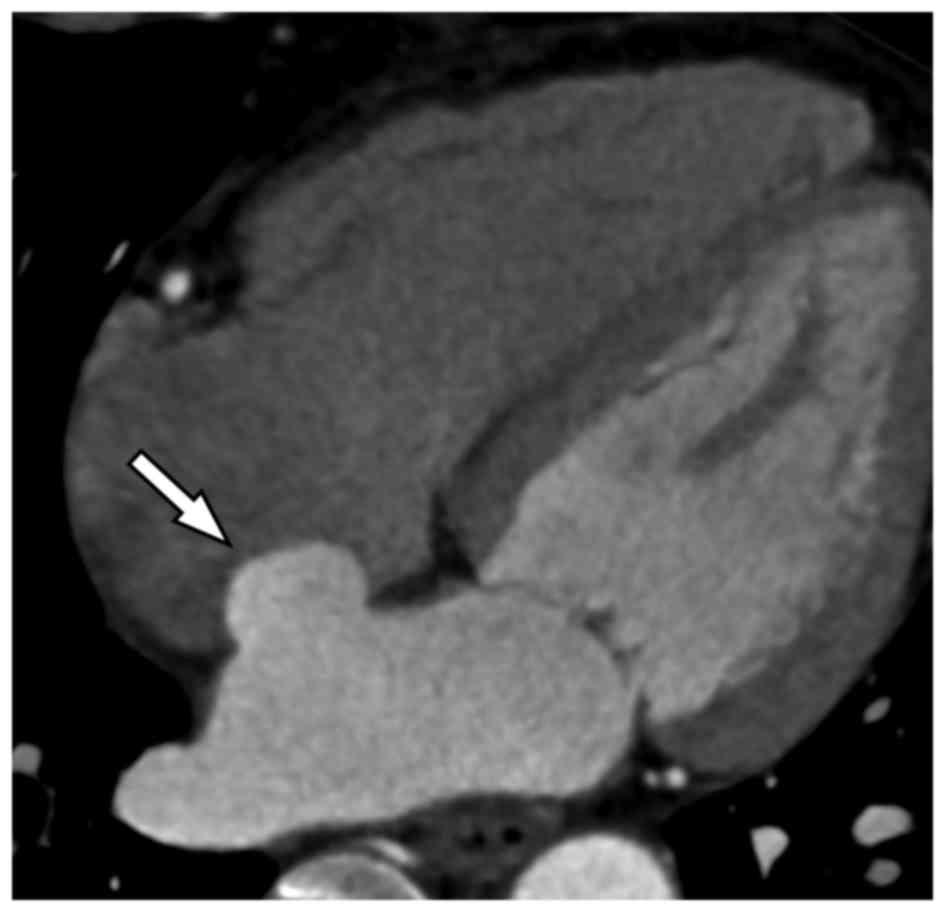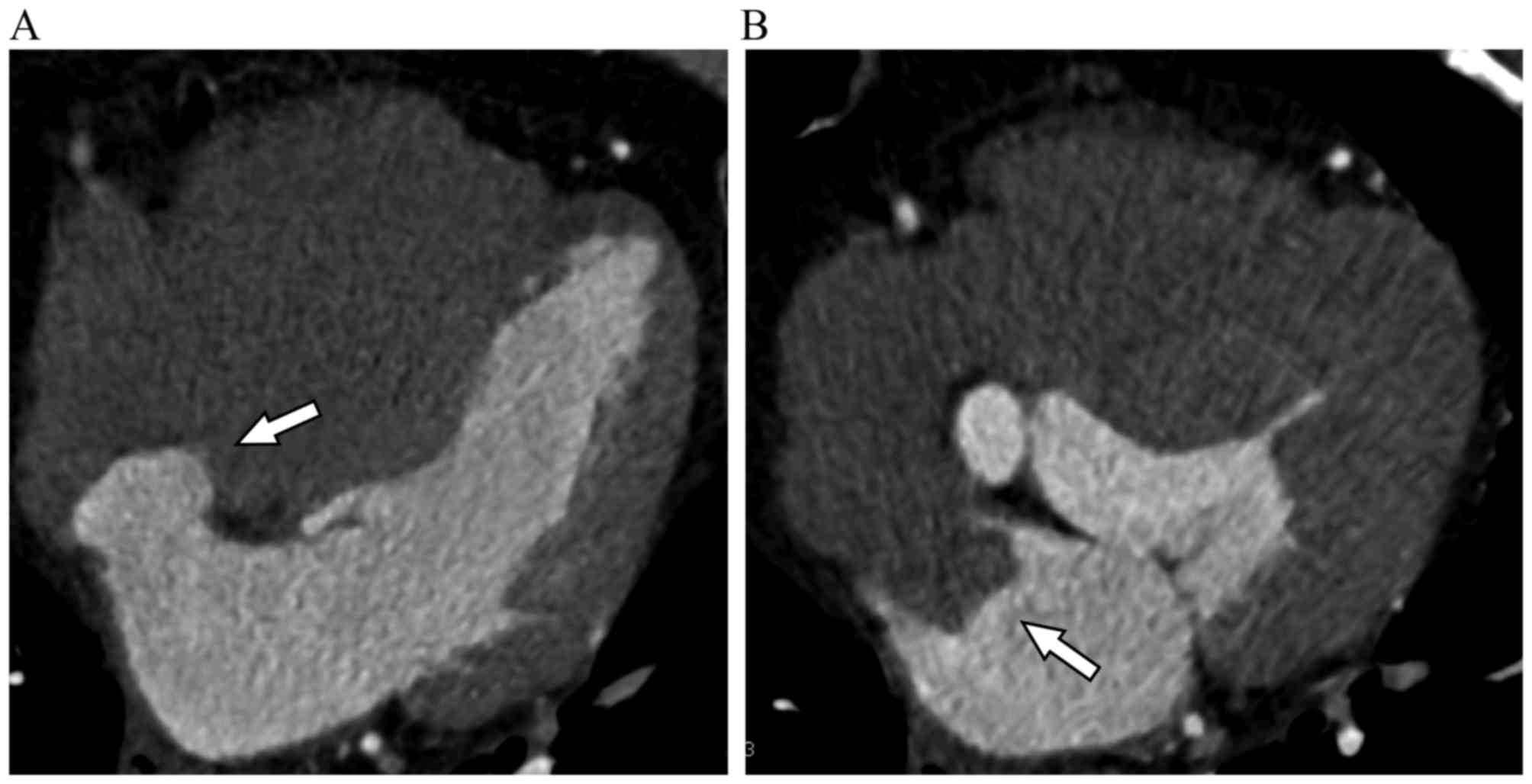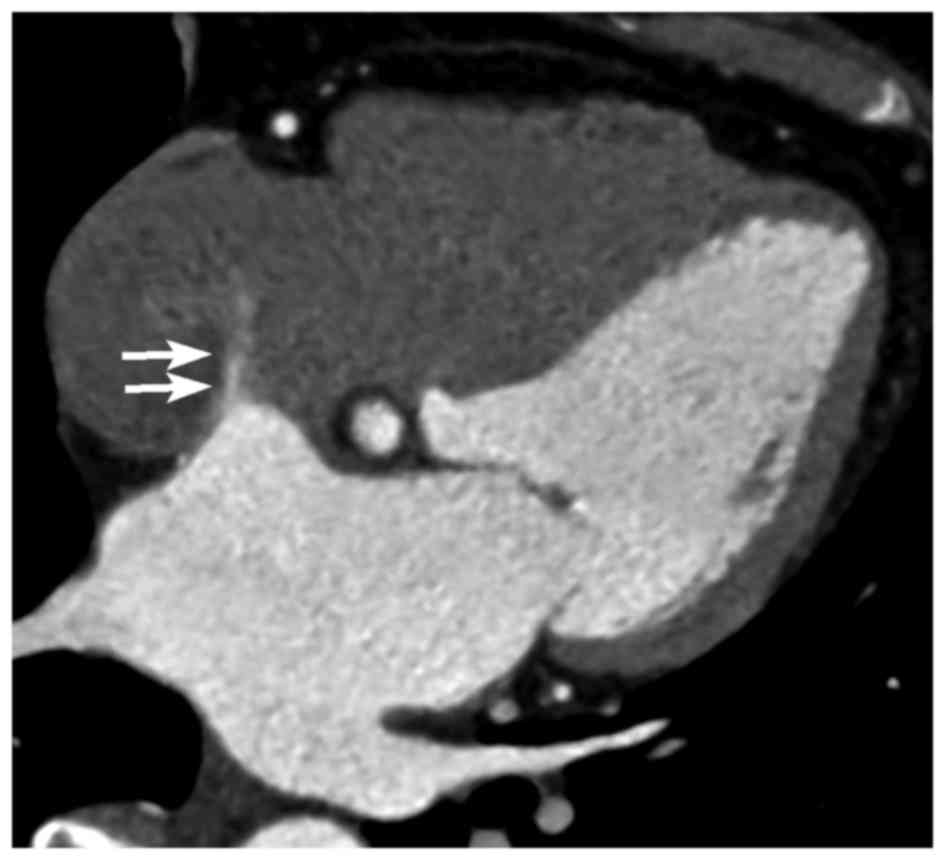Electrocardiography‑gated dual‑source computed tomography in the detection of atrial septal aneurysm
- Authors:
- Published online on: September 11, 2018 https://doi.org/10.3892/etm.2018.6717
- Pages: 4260-4264
Metrics: Total
Views: 0 (Spandidos Publications: | PMC Statistics: )
Total PDF Downloads: 0 (Spandidos Publications: | PMC Statistics: )
Abstract
The aim of the current study was to investigate the atrial septal aneurysm (ASA) incidence rate and describe its morphologic features by dual‑source computed tomography (DSCT). A total of 8,626 patients (4,284 men and 4,342 women) who underwent DSCT examinations were enrolled. The presence of ASA was defined as the protrusion of the complete or partial interatrial septum with a maximum vertical distance (MVD) from the atrial septum plane of >10 mm during a cardiac cycle and a diameter of the aneurysm base of >15 mm. The MVD and direction of the protrusion, as well as other abnormalities, were recorded. The ASA patients were classified by both gender and directions of protrusion into four groups, including the right atrium (RA) and left atrium (LA) groups in males and females, respectively. Values across groups were compared using the independent‑sample t‑test and differences in qualitative variables were assessed with the χ2 test. Of the 8,626 patients, 51 (0.6%) were diagnosed with ASA (mean age, 62±10 years), including 23 (0.5%) males and 28 (0.6%) females. There were no significant differences in the age (t=‑1.37, P>0.05) and incidence rate (χ2=0.43, P>0.05) between the male and female groups. However, there were significant differences in the mean ages (t=‑2.20, P<0.05) and the gender proportions (χ2=7.39, P<0.05) of patients in the RA and LA groups. In the two male groups, no significant differences were observed in the diameters of the ASA bases and MVD in the RA and LA groups. In the female groups, the differences in the MVD of protrusion in RA and LA groups were non‑significant, whereas the diameters of the base of ASA demonstrated significant differences (t=2.27, P<0.05). In conclusion, the ASA incidence rate was 0.6%, and electrocardiography‑gated DSCT scan served as an alternative diagnostic technique for the detection of ASA. It is essential for radiologists to recognize this clinical entity and to minimize misdiagnoses and missed diagnoses.












